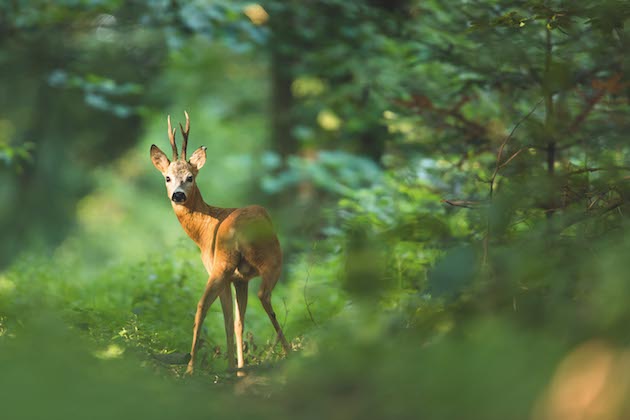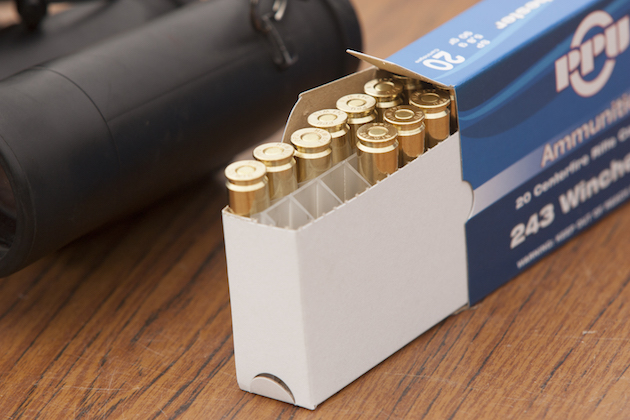Choosing a calibre
I am a keen deerstalker and use a Sako .243. I intend to invest in another rifle with a larger…
Win CENS ProFlex DX5 earplugs worth £1,149 – enter here
Deer stalking: What do you reckon is the ethical max killing range for a 100 grain .243 bullet for a heart/lung shot on Roe?
 Roe Deer
Roe Deer
All deer stalkers know that bullet choice should be made to achieve a humane, first shot kill after the bullet leaves the muzzle.
So is a .243 bullet up to the job? What if you are after roe deer ? What actually is the ethical maximum killing range for a 100 grain .243 bullet for a heart/lung shot? And what about other quarry, like sika deer? At what stage does the bullet run out of energy?
The way to judge the ethical maximum killing range is to know at what distance you can guarantee that your bullet will land within a couple of inches of your aim point. That is, the range at which the rifle will shoot a four inch group.
Although modern rifles will do this at 300 yards you have to be honest about your stalking circumstances. If you have just crawled through a ditch and a hedge and are then lying awkwardly, lining up your shot, then your ethical range is more realistically likely to be well under 100 yards. Only you can judge this.

The .243 is a popular calibre for deer stalking
So at what range is a truly aimed bullet is capable of producing a clean kill?
That depends on two factors.
First of all the amount of energy required needs to be considered and then, what type of bullet will expand and deform so as to apply that energy to the target animal at the reduced velocity of long range.
The question of energy has been hotly debated ever since we discovered how to calculate it.
However, since your 100 grain .243 bullet is still carrying nearly 1000 ft/ lbs of energy at 400 yards, I don’t really think you need to worry about energy.
Secondly there’s bullet performance, which depends on the bullet’s construction and on its impact velocity.
It must expand vigorously at the longest range while not disintegrating at the shortest. Such bullets do exist – but they are expensive.
I am a keen deerstalker and use a Sako .243. I intend to invest in another rifle with a larger…
If it all sounds confusing, then you could try something in .30, .33 or .35 calibre. In one stroke this will remove most of your concerns about the .243. Something that’s certainly worth experimenting with.
Q: Should I get a larger calibre for sika deer? Previously I have always roe stalked with .243.
A: Sika have a reputation among stalkers for being challenging and when shot they are frequent runners.
They are more alert, aware and cautious than roe. Often they don’t emerge until last light and are then very tentative. This may help to explain how they got their reputation because it’s true that an alert and aware animal will react differently to a settled one when shot. This is particularly relevant if the shot placement does not result in an instantly paralysing collapse.
As to a larger calibre, that’s a question only you can answer. When it comes to shooting wild deer the .243 calibre rifle – with its long-established tried and tested reputation and ready supply of factory ammunition – will handle humanely anything you might be likely to encounter in the UK. The only possible exception to this might be the very large red stags of the sort found in some parts of England.
Get the latest news delivered direct to your door
Discover the ultimate companion for field sports enthusiasts with Shooting Times & Country Magazine, the UK’s leading weekly publication that has been at the forefront of shooting culture since 1882. Subscribers gain access to expert tips, comprehensive gear reviews, seasonal advice and a vibrant community of like-minded shooters.
Save on shop price when you subscribe with weekly issues featuring in-depth articles on gundog training, exclusive member offers and access to the digital back issue library. A Shooting Times & Country subscription is more than a magazine, don’t just read about the countryside; immerse yourself in its most authoritative and engaging publication.

